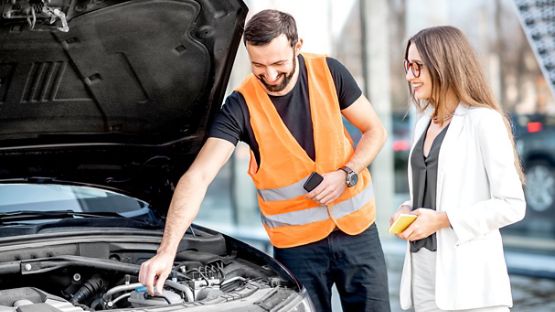The thrill of riding along a forest path on an ATV or cutting through fresh powder on a snowmobile trail are classic pastimes for many adventurous Canadians.
However, there’s a growing movement to incorporate more sustainability into this hobby to protect natural habitats and reduce carbon emissions. The recreational vehicle industry is responding with innovative solutions that promise greener, quieter, and more responsible off-roading experiences.
Here are some of the trends you can expect to see in ATVs and snowmobiles in the coming seasons.
Electrification
Just as electric vehicles (EVs) are transforming the automotive sector, electric ATVs (EATVs) are gaining traction. Manufacturers like Polaris, with its Ranger XP Kinetic line (a collaboration with Zero Motorcycles), are leading the charge. They seek to demonstrate that electric power can deliver comparable—maybe even superior—torque and performance as traditional gas engines, but with zero tailpipe emissions and significantly quieter operation.
While still in its early stages compared to ATVs, electric snowmobiles (e-sleds) are no longer just concepts. Companies like Taiga Motors, a Canadian innovator based in Montreal, are at the forefront, producing production-ready electric snowmobiles. These e-sleds boast zero tailpipe emissions, instant torque delivery, and are considerably quieter—addressing environmental concerns and noise pollution often associated with gas-powered models.
Lower emissions
In 2011, the Marine Spark-Ignition Engine, Vessel and Off-Road Recreational Vehicle Emission Regulations [3526], established air pollutant emission standards for 2012 and later model years of vehicles like off-road motorcycles, snowmobiles, all-terrain and utility vehicles. Regulations like these challenge manufacturers to adopt better technology that helps reduce recreational vehicles’ impact on the environment.
One of the primary advancements in the world of snowmobiles involves the widespread adoption of Direct Injection (DI) two-stroke engines and highly refined four-stroke engines. Traditional carbureted two-stroke engines, while powerful, are known for higher emissions due to unburnt fuel escaping the exhaust. In contrast, DI technology injects fuel directly into the combustion chamber, leading to more complete combustion and significantly reduced emissions and fuel consumption. Manufacturers like Ski-Doo with their E-TEC technology and Polaris with their Cleanfire Injection were among the first on the market with lower emission models.
For gasoline-powered ATVs, advancements focus on making internal combustion engines more efficient and less polluting. This includes:
- Electronic fuel injection (EFI): Replacing older carbureted systems, EFI precisely controls the fuel-air mixture, leading to more complete combustion, better fuel economy, and significantly reduced emissions.
- Catalytic converters: Similar to cars, modern gasoline ATVs are equipped with catalytic converters that process exhaust gases to convert harmful pollutants into less toxic substances.
- Engine design optimization: Manufacturers continuously refine engine designs to burn fuel more cleanly and efficiently.
Recyclable and sustainably sourced materials
There's a growing emphasis on using recyclable and sustainably sourced materials in ATV and snowmobile manufacturing, from plastics to metals, mirroring trends seen in other industries. This addresses the lifecycle environmental impact of these machines, from manufacturing to end-of-life disposal.
A significant area of innovation is in the use of recycled plastics. Many components on both ATVs and snowmobiles—such as body panels, fenders, shrouds, and interior trim—are traditionally made from plastic polymers. Manufacturers are actively exploring and implementing the use of recycled content, including post-consumer and post-industrial plastics, to lessen their reliance on virgin petroleum-based resins. This practice directly reduces plastic waste and the energy associated with producing new plastics.
Sustainable metals are fundamental to the durability and performance of both ATVs and snowmobiles. Critical structural components like chassis, frames, suspensions, and engine parts extensively use aluminum and steel. The industry is increasingly prioritizing the sourcing of recycled aluminum and recycled steel, which significantly cuts the high energy consumption and greenhouse gas emissions linked to primary metal production. It also leverages well-established recycling streams from the wider automotive and industrial sectors, making the manufacturing process more environmentally efficient.
There's also growing research on the efficiency of bio-based or natural fiber composites. Materials like flax or hemp fibers, when combined with bio-resins, are being explored as sustainable alternatives to traditional fiberglass or virgin plastics for certain non-load-bearing components. These renewable resources offer the benefit of lower embodied energy and reduced reliance on petroleum. Companies like Taiga Motors are considering these materials as part of their broader sustainable design ethos.
As newer ATVs and snowmobiles incorporate sustainability principles into their design and manufacturing processes, owners may benefit from lower operating costs and a more pleasant experience in nature.
RideLife offers coverage for ATVs and snowmobiles
The right insurance protection goes a long way to ensuring continued fun times on the trail. Discover Aviva’s RideLife product, designed for the ATV and snowmobile adventurers.













